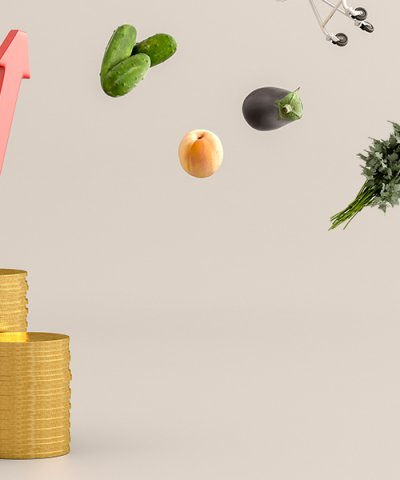
4 big trends that will drive food investments in 2023 and beyond
According to Crunchbase, 2021 was a record year for food tech investments—and not just by a little. Brands and products that optimize food production, taste, health and more (from plant-based protein to better tasting low-fat/calorie foods) snagged a whopping $12.8 billion last year—double that of 2020.
Investors remain bullish on new and unique food technologies; but as the economic outlook worsens, they’re getting pickier about their prospects. Several big consumer trends will drive success in food technology—and help investors make smart decisions about who they back.
Trend 1: When it comes to GMOs, opinions are shifting
For years, the tide of public opinion on GMOs has been turning. In fact, one recent study found that from 2018 to 2020, “both traditional and social media saw trends toward increasing favorability [of GMOs] with the positive trend especially robust in social media.” Researchers believe that the results suggest a public that is “moving toward a more favorable and less polarized conversation on ag-biotech overall.”
And while much of the work done in genetically modified crops to date has been to solve food production challenges, decrease costs and improve yields, researchers are discovering how they can help improve our health. In fact, The New York Times recently reported that GMO tomatoes with boosted levels of anthocyanin (a naturally occurring anti-inflammatory compound) increased the lifespan of cancer-prone mice by 30 percent, and made them less likely to suffer from IBS.
What it means for food tech brands and investors
Obviously, this trend is good news for farmers and brands that directly deal in GMO produce. But beyond that, it spells a wider acceptance of all types of naturally derived—yet scientifically modified—ingredients (a good segue into trend #2).
Trend 2: The demand for low-calorie alternative ingredients has never been higher
From alternative fats derived from plant oils that can lower fat and calories to zero-calorie sweeteners made from exotic natural fruits, shoppers are not only embracing healthier alternative ingredients—they’re demanding them. It’s an answer to a call for foods lower in sugar, calories and fat, and the market for them is set to triple by 2030. Investors have already seen dollar signs as brands like Nick’s Ice Cream, Gatsby Chocolate and more gain traction among calorie-counting consumers.
What it means for food tech brands and investors
As the public warms to the marriage of science and nature on their nutritional labels (see trend #1) brands that embrace naturally derived (but lab-optimized) ingredients will win. In other words, investors should embrace food brands that incorporate these types of modified ingredients—assuming they are proven safe and can help improve the taste and nutritional label of a formulation.
Trend 3: The plant-based honeymoon is over
Of the record-breaking investment activity in 2021, alternative meat and dairy brands took nearly half of the spoils. But the glow is fading. Talking heads blame a variety of factors, but the reality is fairly simple: Consumers want to embrace plant-based alternatives for health and environmental reasons, but are simply unwilling to compromise on taste. In fact, 73% of respondents in one survey said meat alternatives should mimic the taste of real meat. Several of the leading brands claim to, but decelerating sales and a lack of loyalty indicate that many offerings fall short.
What it means for food tech brands and investors
The plant-based segment is primed for a shake-up, but brands and investors that survive the fallout will see significant returns in the long run. So how can brands stand the test of time? They’ll need to rely on cutting-edge food technologies that can help improve flavor and texture while also improving the nutritional profile. And when it comes to plant-based meat and dairy, that translates to ingredients that can better mimic the taste and mouthfeel of animal fat.
Trend 4: A fat backlash is coming
For years, sugar has been the go-to bad guy; but many experts and nutritionists believe saturated fat is the next to face growing scrutiny. According to the NIH, Americans are eating too much of it, thanks to an increase in red meat and processed food consumption. Furthermore, many Americans (particularly younger) don’t differentiate between “good” and “bad” fats. Nutritionists we’ve spoken with agree that the full fallout may be yet to come—as Millennials and Gen-Xers deal with worsening health repercussions.
What it means for food tech brands and investors
Investors should know about and be prepared for more impending backlash against saturated fat. The problem is, Americans have developed such a taste for high-fat foods that cracking the low-fat code has never been more challenging. If a food brand is to win at this game, it needs to leverage new food technologies to reduce saturated fat and calories without compromising the taste and texture consumers have grown accustomed to.
A new secret weapon in the food tech space
Alternative fat technology EPG is one way several leading brands are capitalizing on consumer trends and shifting attitudes. Over 30 years in the making, EPG is a proven way to improve the taste, texture and nutritional profile of a variety of foods without any tradeoffs. EPG scientists have already done the legwork and due diligence, investing decades in research, safety and regulatory action.
Talk to an Epogee expert today about ways to bring your brand to the next level.



